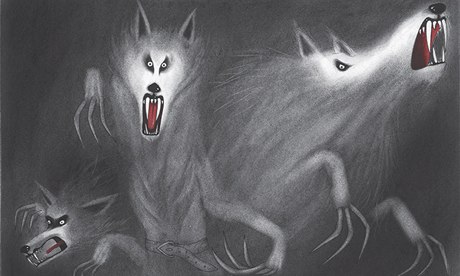The funny thing about most fairy tales, though, is that they can be dark, morbid and even disturbing. Most of us are aware that the original classic fairy tales have been subjected to modern reworks that make them what Disney would classify as child-friendly. Sometimes they are scary, but it's rare to encounter one now that doesn't have a happy ending.
Then comes Tinder, Sally Gardner's fairy tale based on Hans Christian Andersen's The Tinderbox. It has everything an older reader, YA or adult, could possibly want to cleanse happily-ever-after from the system: chivalry, magic, werewolves, violence, seduction and deception. The story begins shortly after our protagonist Otto escapes the horrors of war, and while recovering he meets the beautiful red-haired Safire. Once she disappears, he knows he will do anything to find and marry her. But his quest takes him to dark and mysterious places, to the land of the werewolves, where he is suddenly entangled in the magic and curses that surround Safire's family.
This book is a great read, made particularly wonderful with illustrations by David Roberts. The gorgeous design and sparing use of colour (only black, white and red), make this haunting story worth owning - even if only to look at the pictures. The design is what drew me in, and I picked it up not knowing what to expect. The story itself did surprise me: this is very much not a children's fairy tale, especially with being quite frank about Otto wanting to sleep with Safire. At the end of the book Gardner points out that she wishes there were more illustrated books published for an older audience. I certainly share the sentiment, and I hope to see more books of this nature and quality in the future.
This book is a great read, made particularly wonderful with illustrations by David Roberts. The gorgeous design and sparing use of colour (only black, white and red), make this haunting story worth owning - even if only to look at the pictures. The design is what drew me in, and I picked it up not knowing what to expect. The story itself did surprise me: this is very much not a children's fairy tale, especially with being quite frank about Otto wanting to sleep with Safire. At the end of the book Gardner points out that she wishes there were more illustrated books published for an older audience. I certainly share the sentiment, and I hope to see more books of this nature and quality in the future.


No comments:
Post a Comment